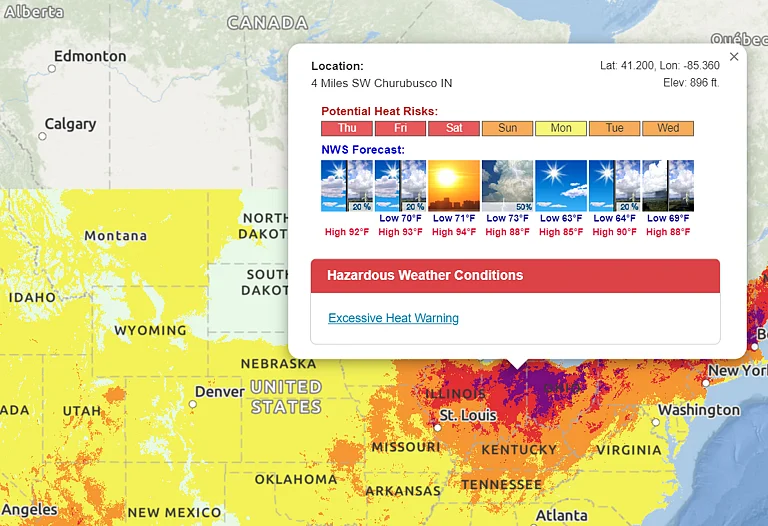As heatwaves become more frequent and intense, the need to cool our homes using air conditioning and other appliances leads to skyrocketing electric bills. Finding ways to reduce these costs while staying comfortable is crucial.
Here are ten practical tips to help you lower your electric bill during heatwaves.
1. Switch to LED lighting
LED bulbs produce less heat and consume less electricity than traditional incandescent bulbs. This not only saves on lighting costs but also reduces the additional heat load in your home, easing the burden on your air conditioner.
2. Strategic AC management
Air conditioning is a major contributor to summer energy bills, often comprising nearly half of total costs. Casaundra Donahoe from the Salt River Project (SRP) advises setting your thermostat a few degrees higher when you're away from home, which can save up to 3% per degree. For optimal savings, keep your thermostat at 78 degrees or higher while you're at home, and raise it further when you're away.
3. Smart thermostats for efficiency
Investing in a smart thermostat can significantly streamline your AC usage. Arizona Public Service (APS) offers rebates of up to $115 for installing qualified smart thermostats. These devices allow you to create cooling schedules and adjust temperatures remotely, ensuring your home is comfortable only when necessary.
4. Ventilation strategies and fan use
Tom Hines of APS emphasises the role of fans in enhancing cooling efficiency. Ceiling fans, when used in conjunction with a smart thermostat, can create a wind chill effect that allows you to raise your thermostat setting without sacrificing comfort. Position fans strategically to promote airflow throughout your home and reduce reliance on air conditioning during cooler parts of the day.
5. Blocking solar heat gain
Sunlight streaming through windows contributes significantly to indoor heat. To combat this, SRP and APS recommend installing shade screens, using curtains or blinds, and planting trees strategically to provide natural shading. These measures can reduce solar heat gain by up to 25%, thereby lowering the need for constant AC use.
6. Designing houses for energy efficiency
The US Department of Energy's Energy Saver Guide suggests several strategies for designing energy-efficient homes in hot climates like Arizona's. This includes using landscaping techniques such as planting deciduous trees on the south side of your home to provide shade in summer and allow sunlight in winter. Installing cool roofs that reflect sunlight and emit absorbed heat can also significantly reduce cooling costs.
7. Embracing renewable energy solutions
Both SRP and APS offer incentives and programs for installing rooftop solar panels. These initiatives enable residents to generate their own electricity and potentially sell excess power back to the grid, offsetting energy costs over time. Community solar programs provide options for renters and homeowners unable to install solar panels on their properties, promoting widespread access to renewable energy sources.
8. Efficient use of appliances
To minimise heat buildup and reduce energy consumption during peak hours, APS recommends scheduling the use of heat-generating appliances like ovens, dishwashers, and clothes dryers outside of peak demand times. This practice not only lowers immediate energy costs but also helps maintain a cooler indoor environment, reducing the strain on your AC system.
9. Ensuring AC system efficiency
Regular maintenance of your air conditioning unit is crucial for optimising its performance and longevity. Tasks such as cleaning vents, changing air filters every three months, and clearing debris around outdoor units can improve airflow and reduce the energy required to cool your home effectively.
10. DIY energy-saving projects
For homeowners looking to further reduce energy costs, SRP and Energy Saver recommend various DIY projects:
Installing smart thermostats to automate temperature control
Building shade screens or awnings to reduce solar heat gain
Insulating doors and windows to minimise air leaks
Using weatherstripping and caulking to seal gaps and cracks
By implementing these detailed strategies, Valley residents can effectively manage their energy usage, lower utility bills, and maintain a comfortable living environment throughout the sweltering summer months.



















